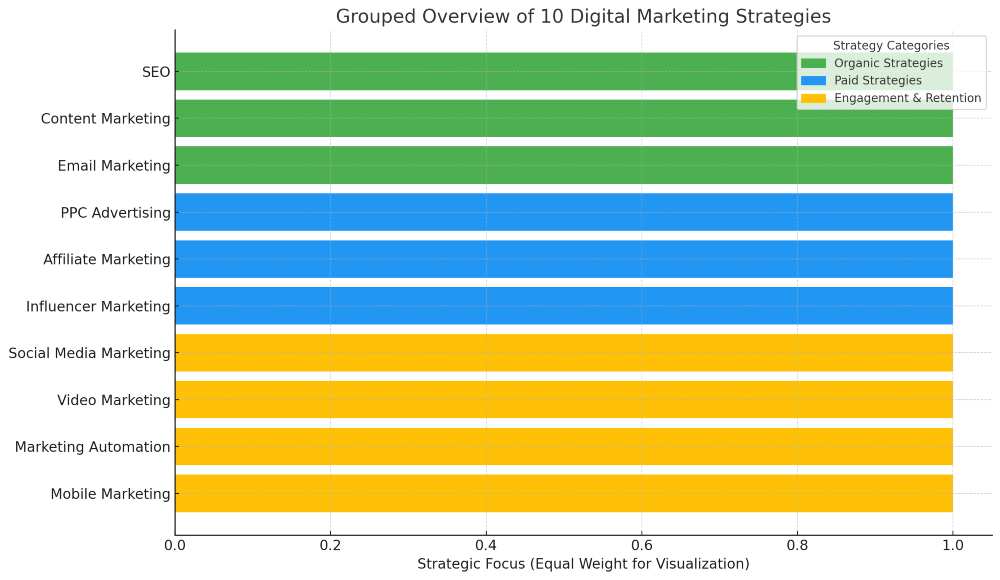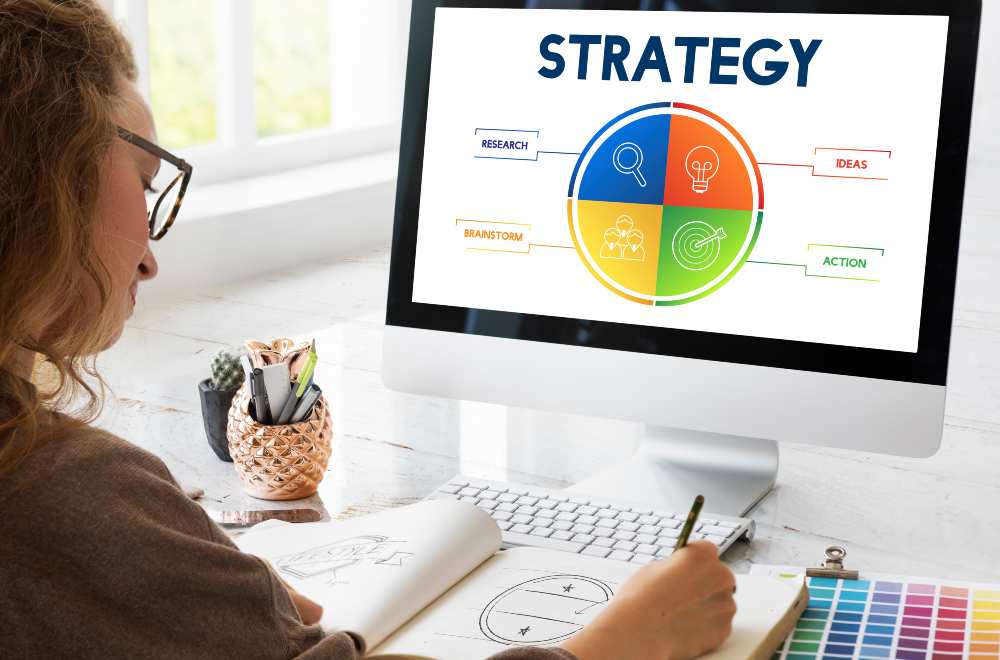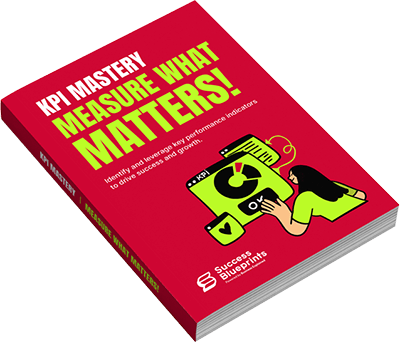Table of Contents
- What is a Digital Marketing Strategy?
- #1 Mastering Search Engine Optimization (SEO) for Greater Visibility and Traffic
- #2 Harnessing the Power of Content Marketing to Build Trust and Loyalty
- #3 Social Media Marketing (SMM): Building Real-Time Connections with Your Audience
- #4 Pay-Per-Click Advertising (PPC): Driving Instant Traffic and Targeted Leads
- #5 Email Marketing: Nurturing Customer Relationships with Personalized Campaigns
- #6 Affiliate Marketing: Leveraging Partnerships for Performance-Based Growth
- #7 Influencer Marketing: Expanding Your Reach with Trusted Endorsements
- #8 Mobile Marketing: Targeting Consumers on the Go for Instant Engagement
- #9 Video Marketing: Engaging Your Audience with Compelling Visual Storytelling
- #10 Marketing Automation: Streamlining Your Efforts for Better Efficiency
- Key Performance Indicators (KPIs) in Digital Marketing
- How to Choose the Right Digital Marketing Strategy for Your Business?
- Digital Marketing Challenges You Need to Overcome for Growth and Success
- Key Considerations for Choosing a Digital Marketing Strategy
In today’s digital-first world, businesses must leverage online channels to connect with customers and stay competitive. Digital marketing offers a variety of strategies to achieve this, from SEO and content marketing to social media and email campaigns. As new technologies emerge, the opportunities to engage with your audience continue to grow.
In this guide, we’ll explore 10 types of digital marketing strategies that can help you boost brand visibility, increase conversions, and drive long-term growth. Whether you’re new to digital marketing or looking to refine your approach, this overview will provide the insights you need to choose the best tactics for your business.
What is a Digital Marketing Strategy?
In today’s fast-paced and increasingly digital world, a digital marketing strategy has become a vital component of any successful business plan. Digital marketing encompasses a wide range of online activities aimed at promoting products or services, engaging with consumers, and driving business growth.
A well-rounded strategy leverages various digital marketing techniques to reach customers through channels like social media, search engines, email, and websites.
The goal of a digital marketing strategy is to build brand awareness, generate leads, and eventually convert these leads into loyal customers. With the rise of digital marketing, companies can engage their audience in more personalized and measurable ways, often yielding higher ROI (Return on Investment) compared to traditional marketing methods.
In this guide, we’ll explore different types of digital marketing strategies that businesses of all sizes can use to elevate their marketing efforts in 2025 and beyond.
Whether you’re a small startup or an established brand, the right combination of strategies can significantly impact your success.
#1 Mastering Search Engine Optimization (SEO) for Greater Visibility and Traffic
When people think of digital marketing techniques, Search Engine Optimization (SEO) often comes to mind first. SEO is the practice of optimizing your website to rank higher on search engine results pages (SERPs), ultimately driving organic traffic to your site. SEO is essential because the majority of online experiences begin with a search engine, and appearing at the top of the search results gives your business greater visibility.
There are two main aspects of SEO:
- On-Page SEO: this focuses on optimizing the content and structure of your website to make it search-engine friendly. Key elements include using relevant keywords, creating high-quality content, optimizing images, and ensuring that your website is mobile-friendly.
- Off-Page SEO: off-page SEO involves activities outside of your website that can affect your rankings, like backlink building, social media engagement, and brand mentions.
Strong off-page SEO signals to search engines that your website is trustworthy and authoritative.
SEO is a long-term strategy that requires consistent effort and optimization. For more in-depth strategies, explore our marketing e-book collection to enhance your understanding of SEO and its impact on your business growth.
#2 Harnessing the Power of Content Marketing to Build Trust and Loyalty
Content marketing is one of the most powerful types of digital marketing strategies today. At its core, content marketing involves creating and sharing valuable content to attract, engage, and retain your target audience. This content can come in many forms—blogs, articles, videos, infographics, and even podcasts.
The beauty of content marketing lies in its ability to provide value rather than focusing on direct sales. As you explore different types of digital marketing strategies, content marketing stands out for its long-term effectiveness in building trust and loyalty with your audience.
Why is content marketing so effective? It’s because it focuses on providing value rather than directly selling products. Well-crafted content helps build trust with your audience, which leads to higher conversion rates over time.
Some of the key content marketing strategies include:
- Blogging: regular blog posts that address your audience’s pain points, share insights, and solve problems.
- Video Marketing: engaging video content that tells a story, showcases your products, or educates your audience.
- Podcasts: audio content that offers deep dives into topics of interest, interviews, or industry updates.
For more tips on creating compelling content that resonates with your audience, be sure to check out our Content Creation eBook.
#3 Social Media Marketing (SMM): Building Real-Time Connections with Your Audience
Social media has become a staple in digital marketing techniques, allowing businesses to engage with their audience in real time. Platforms like Facebook, Instagram, Twitter, LinkedIn, and TikTok provide businesses with the opportunity to reach a broad audience and target specific demographic groups.
The main goal of Social Media Marketing (SMM) is to build brand awareness, foster relationships with customers, and drive traffic to your website. Depending on your business goals, social media can also be used to drive sales, promote new products, or announce special offers.
Successful SMM strategies often include:
- Content Creation: sharing content that resonates with your audience and encourages engagement (likes, comments, shares).
- Influencer Partnerships: collaborating with social media influencers who have a significant following in your niche.
- Paid Ads: running targeted ads to reach your ideal customers and drive specific actions like website visits or product purchases.
The beauty of SMM lies in its ability to foster two-way communication between brands and consumers. This relationship-building process enhances customer loyalty and brand trust.
Explore our Marketing Frameworks Explained eBook for deeper insights into creating a strong social media strategy.
#4 Pay-Per-Click Advertising (PPC): Driving Instant Traffic and Targeted Leads
Pay-Per-Click Advertising (PPC) is a form of digital marketing that involves paying for each click on an ad you place on search engines or websites. Google Ads and Bing Ads are the most popular platforms for PPC campaigns, but other networks like Facebook and LinkedIn also offer robust PPC advertising options.
With PPC, businesses can target specific keywords, locations, demographics, and even devices to ensure that their ads reach the right audience at the right time. This makes it a highly effective strategy for driving targeted traffic to your website, especially if you’re looking to achieve quick results.
Key benefits of PPC include:
- Immediate Results: once your campaign is live, you start driving traffic and leads almost instantly.
- Highly Targeted: you can tailor your ads based on user behavior, search history, and demographics.
- Measurable ROI: you can track and measure your PPC campaigns in real-time, making it easier to assess their effectiveness and make data-driven decisions.
PPC advertising can complement your SEO efforts by targeting keywords you may not yet rank for, giving you visibility right away while you continue to work on improving your organic rankings.
#5 Email Marketing: Nurturing Customer Relationships with Personalized Campaigns
Email marketing remains one of the most reliable types of digital marketing strategies for building relationships with customers. Despite the rise of social media and other marketing channels, email is still one of the most cost-effective ways to engage with your audience and convert leads into customers.
Key email marketing strategies include:
- Personalization: tailor your email content based on customer preferences and behaviors to make it more relevant.
- Segmentation: divide your email list into different segments (e.g., by location, behavior, or interests) to send more targeted messages.
- Automation: use email marketing platforms like Mailchimp or HubSpot to automate your campaigns, from welcome emails to post-purchase follow-ups.
Email marketing is effective because it delivers your message directly to a customer’s inbox, which they check regularly. It’s a powerful tool for nurturing leads and building customer loyalty over time.

#6 Affiliate Marketing: Leveraging Partnerships for Performance-Based Growth
Affiliate marketing is a performance-based marketing strategy where businesses partner with affiliates (individuals or other companies) to promote their products or services. Affiliates earn a commission for each sale or action they drive through their referral links.
Affiliate marketing is especially popular for e-commerce businesses and bloggers. It’s a relatively low-risk strategy since businesses only pay for actual sales or leads generated by affiliates.
Additionally, it allows brands to leverage the reach of others to expand their audience without investing heavily in advertising.
#7 Influencer Marketing: Expanding Your Reach with Trusted Endorsements
Influencer marketing has become one of the most popular types of digital marketing strategies in recent years.
By partnering with influencers—individuals who have a significant following and influence over their audience – businesses can reach new audiences and gain credibility through the influencer’s endorsement.
Influencers can be found across various platforms, including Instagram, YouTube, TikTok, and Twitter. The key to successful influencer marketing lies in selecting influencers whose audience aligns with your target market.
For more insights into influencer marketing, explore our blog post on Podcast Content Marketing Examples and how to Include It in Your Business.

#8 Mobile Marketing: Targeting Consumers on the Go for Instant Engagement
With the increasing use of smartphones and tablets, mobile marketing has become a crucial part of any digital marketing strategy.
Mobile marketing refers to any marketing strategy that targets users on their mobile devices, such as text messages, mobile apps, and mobile-friendly websites.
The mobile-first approach is essential because more and more consumers are browsing the internet and making purchases via their mobile devices.
Ensuring that your website is optimized for mobile viewing, sending SMS campaigns, and developing branded mobile apps are all effective strategies within mobile content marketing.
#9 Video Marketing: Engaging Your Audience with Compelling Visual Storytelling
Video marketing is an incredibly effective way to engage audiences and convey your brand message. From YouTube videos to Instagram stories, video content can be used to showcase products, educate customers, or tell a compelling brand story.
Video marketing is highly effective because it combines audio and visual elements, making it one of the most engaging content formats on the internet.
Moreover, platforms like YouTube and TikTok are seeing massive growth, making them key channels for businesses looking to reach younger, tech-savvy audiences.
#10 Marketing Automation: Streamlining Your Efforts for Better Efficiency
Marketing automation refers to the use of software to automate repetitive marketing tasks. This can include email marketing, social media posts, and even customer segmentation.
By automating certain tasks, businesses can save time, streamline operations, and ensure that their marketing efforts are consistently executed.

Key Performance Indicators (KPIs) in Digital Marketing
To measure the success of your digital marketing strategy, it’s essential to track Key Performance Indicators (KPIs). KPIs are metrics that help you assess the effectiveness of your marketing efforts and understand what’s working and what’s not. By evaluating these metrics, you can make data-driven decisions, refine your approach, and achieve better results.
Here are some important KPIs to consider in digital marketing:
1. Website Traffic
Tracking the number of visitors to your website is one of the fundamental KPIs. It helps you gauge how well your digital marketing strategies are driving traffic. By monitoring the sources of traffic—whether it’s from organic search, paid ads, social media, or referrals—you can determine which channels are the most effective.
2. Conversion Rate
The conversion rate measures how many visitors take a desired action, such as making a purchase, signing up for a newsletter, or filling out a contact form. This is a critical KPI because it reflects the effectiveness of your website and landing pages in converting visitors into leads or customers.
3. Customer Acquisition Cost (CAC)
Customer Acquisition Cost (CAC) measures how much it costs to acquire a new customer. This includes the total marketing and sales expenses divided by the number of customers acquired during a given period. A lower CAC is ideal as it indicates that your marketing efforts are efficient and cost-effective.
4. Return on Investment (ROI)
ROI is a vital KPI that helps you understand the profitability of your digital marketing campaigns. It’s calculated by subtracting the marketing expenses from the revenue generated and then dividing that number by the marketing costs. A positive ROI means your campaigns are profitable, while a negative ROI indicates that adjustments are needed.
5. Click-through rate (CTR)
The CTR is the percentage of people who click on an ad, email, or link compared to how many saw the ad or email. For example, if 100 people see an ad and 5 click on it, the CTR is 5%. This KPI helps measure the effectiveness of your ads, emails, or links in generating interest.
6. Customer Lifetime Value (CLV)
Customer Lifetime Value (CLV) is a metric that estimates how much revenue a customer will generate throughout their relationship with your brand. A higher CLV indicates strong customer loyalty and successful long-term retention strategies.
7. Engagement Rate
The engagement rate measures how much interaction your audience has with your content. It includes likes, shares, comments, retweets, and other forms of engagement on social media. A high engagement rate is a sign that your audience finds your content valuable and resonates with your brand.
How to Choose the Right Digital Marketing Strategy for Your Business?
With so many types of digital marketing strategies available, choosing the right one for your business can be overwhelming. However, by considering several key factors, you can make an informed decision that aligns with your goals, budget, and resources.
Here are four crucial steps to help you choose the best digital marketing strategy for your business:
1. Define Your Target Audience
Before you begin implementing any marketing strategy, it’s essential to define your target audience. Understanding your customers’ demographics, interests, and behaviors allows you to tailor your digital marketing efforts to their specific needs. Audience segmentation enables you to create highly targeted campaigns that are more likely to resonate with your audience, leading to higher engagement and conversions.
To define your target audience:
- Conduct market research to understand who your ideal customers are.
- Use data from your website, social media platforms, and existing customers to create buyer personas.
- Consider factors such as age, gender, location, income level, and purchasing habits.
2. Set Clear and Achievable Marketing Goals to Guide Your Strategy
Having clear, measurable goals is the foundation of any successful digital marketing strategy. Whether you’re focused on increasing brand awareness, generating leads, or boosting sales, defining your goals ensures that you stay focused and aligned throughout the campaign.
Smart goal-setting techniques like SMART goals (Specific, Measurable, Achievable, Relevant, Time-bound) help you set clear expectations and track progress over time. For example, a SMART goal might be: “Increase website traffic by 20% over the next six months through SEO and content marketing efforts.”
3. Analyze Your Budget and Resources
Your marketing budget and resources will significantly influence the digital marketing strategies you can pursue. Some tactics, such as SEO or content marketing, may require more time and expertise than financial investment, while others, like PPC advertising, may demand a more substantial budget.
It’s essential to allocate your resources efficiently and prioritize strategies that will yield the best ROI. Consider factors such as:
- Staff expertise: do you have in-house capabilities to handle certain strategies (e.g., SEO or content creation)?
- Tools and software: do you have the necessary tools to manage campaigns and track results effectively?
- Time and budget: how much time and money can you realistically dedicate to each marketing channel?
4. Continuously Test, Measure, and Optimize for Maximum Impact
Digital marketing is an ongoing process of experimentation and optimization. Once you’ve implemented your chosen strategies, it’s crucial to continuously test and measure their effectiveness. A/B testing, split testing, and performance analysis help you determine which tactics are working and which need improvement.
Utilise analytics tools (like Google Analytics, social media insights, or email marketing platforms) to track key metrics such as website traffic, conversion rates, and customer engagement. Based on the data you collect, you can refine your campaigns and adjust your approach to maximise results.
Digital Marketing Challenges You Need to Overcome for Growth and Success
While digital marketing offers numerous benefits, it also comes with its fair share of challenges. Here are some common obstacles businesses face when implementing digital marketing strategies:
1. Keeping Up with Constant Changes in Technology
Digital marketing is a dynamic field, with new platforms, tools, and technologies emerging regularly. Staying updated on the latest trends and best practices is essential to maintaining a competitive edge. For instance, technologies like AI, AR, and VR are expected to play significant roles in the future of influencer marketing and customer experience.
To overcome this challenge:
- Attend industry conferences and webinars to stay informed.
- Subscribe to blogs and newsletters to keep up with trends.
- Invest in training and development for your team.
2. Overcoming Information Overload
With so many digital marketing channels and strategies to choose from, it can be overwhelming to determine the best path forward. Additionally, consumers are bombarded with information daily, making it difficult to capture their attention.
To overcome this challenge:
- Focus on a few key marketing channels that resonate with your audience.
- Develop a strong brand identity to stand out in a crowded digital landscape.
- Provide value with content that educates, entertains, or solves problems for your audience.
3. Measuring ROI
While digital marketing provides measurable results, calculating the true ROI can sometimes be challenging. Certain strategies, such as SEO and content marketing, require time to show results, making it difficult to quantify short-term ROI. Additionally, some marketing channels may require a more nuanced analysis.
To measure ROI more effectively:
- Set clear KPIs and benchmarks from the outset.
- Use tools like Google Analytics and CRM software to track conversions and sales.
- Understand that some marketing efforts may contribute to long-term brand equity rather than immediate sales.
4. Managing Multi-Channel Campaigns
Running a multi-channel digital marketing campaign can be complex, requiring seamless coordination across various platforms. Managing social media ads, PPC campaigns, email marketing, and content creation simultaneously can stretch your resources thin.
To manage this challenge:
- Use marketing automation tools to streamline processes.
- Keep your messaging consistent across channels.
- Continuously monitor performance to ensure all channels are working toward the same business goals.
Key Considerations for Choosing a Digital Marketing Strategy
In conclusion, choosing the right digital marketing strategy depends on your business objectives, target audience, budget, and resources. By leveraging a combination of strategies, such as SEO, content marketing, PPC, and social media marketing, you can create a comprehensive marketing plan that drives growth and enhances customer engagement.
Remember to track your efforts using KPIs, continuously optimize your approach, and stay informed on the latest trends and technologies to stay ahead of the competition. For more resources to refine your strategies, check out our Marketing Frameworks Explained eBook.
When it comes to digital marketing, there’s no one-size-fits-all solution. By experimenting, analyzing results, and adapting to changes, you can build a digital marketing strategy that aligns with your business goals and drives success.




 Risk-free Purchase: Full refund within 14 days
Risk-free Purchase: Full refund within 14 days



